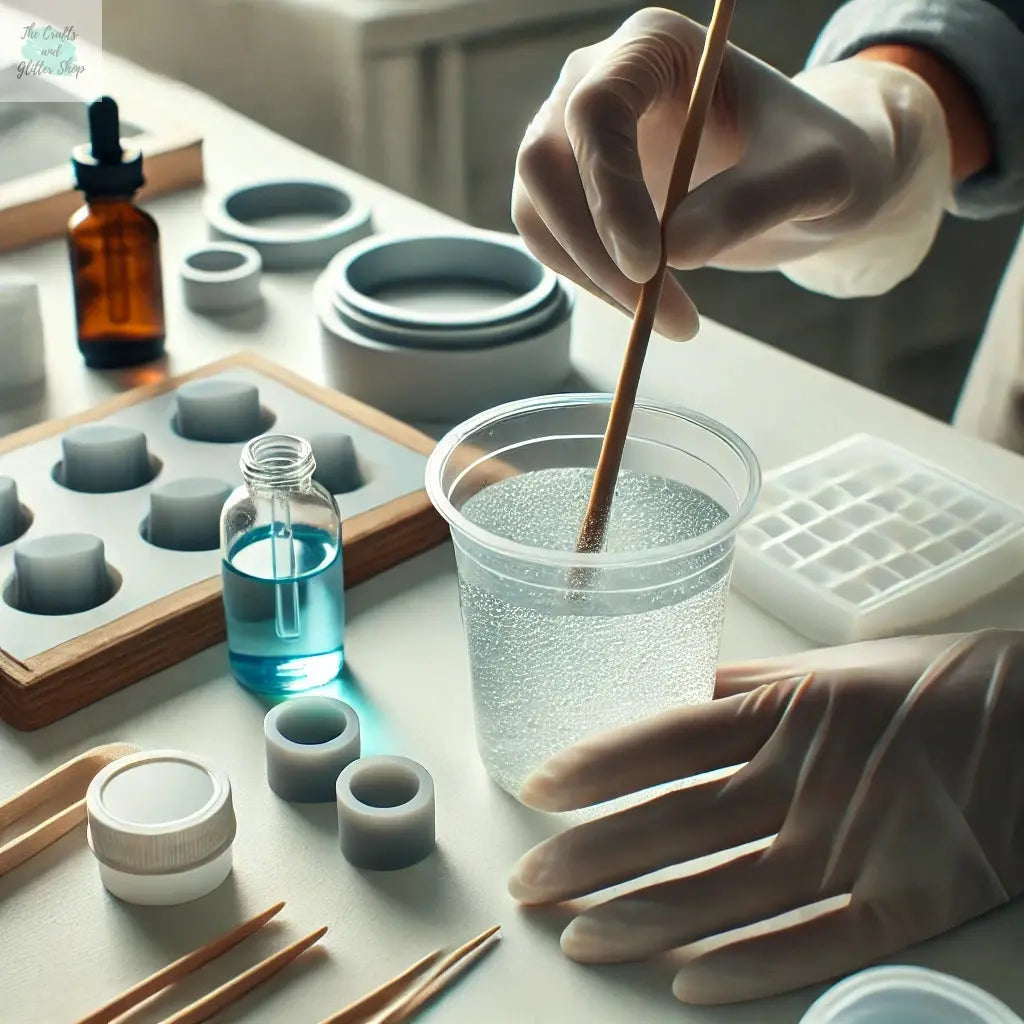
How to Avoid Getting Bubbles in Resin Projects: Tips for a Perfect Finish
Share
Working with resin can be a fun and rewarding craft, but one of the biggest challenges is dealing with unwanted bubbles or air pockets that can form during the curing process. These pesky bubbles can ruin the smooth finish you're aiming for, but with a few simple techniques, you can significantly reduce or even eliminate them. In this article, I’ll share practical tips and insights on how to avoid bubbles in resin projects, ensuring a flawless outcome every time.
1. Prepare Your Work Area
A well-prepared work environment is the first step in minimizing bubbles. Make sure you work in a dust-free, temperature-controlled area, as cooler temperatures can cause resin to thicken, trapping air bubbles more easily. Resin tends to perform best at temperatures between 70°F and 75°F (21°C to 24°C).
2. Mix Resin Slowly and Carefully
One of the most common causes of bubbles is aggressive stirring during the mixing process. To minimize bubbles:
- Stir slowly and deliberately. Rapid mixing introduces air into the resin, which then gets trapped as bubbles.
- Scrape the sides and bottom of your mixing container gently to ensure the components are fully incorporated without whipping in excess air.
- If you do notice bubbles forming during the mix, allow the resin to rest for a few minutes. This gives the air bubbles time to rise to the surface and dissipate on their own.
3. Warm Your Resin and Molds
Cold resin can trap air bubbles more easily. Before you begin your project, warm the resin by placing the bottles in a warm water bath for 10 to 15 minutes. This will make the resin less viscous, allowing bubbles to escape more readily.
Warming your silicone molds can also help reduce bubbles. Cold molds can cause resin to cool too quickly, trapping air inside. Preheat your molds slightly (avoid overheating) by running a hairdryer or heat gun over them before pouring the resin.
4. Use a Heat Gun or Torch (with Caution)
Once the resin is poured into your mold, a heat gun or torch is one of the most effective tools for removing bubbles. However, keep in mind that resin is flammable, especially before it has cured, so you must be careful when applying heat:
- Apply gentle heat to the surface of the resin to encourage bubbles to rise and pop.
- Always keep the heat source moving to avoid overheating any one area and potentially igniting the resin.
- Avoid using a torch for prolonged periods, as this can increase the risk of fire.
Be sure to work in a well-ventilated space and have a fire extinguisher nearby in case of emergencies. Safety should always come first when working with heat and flammable materials.
5. Monitor and Pop Bubbles with a Toothpick
Even after using a heat gun, tiny air bubbles might still form or remain trapped. For these, a toothpick is an easy and effective tool:
- Keep an eye on your project for a few minutes after pouring.
- Use the toothpick to pop visible bubbles or nudge them toward the surface, where they can release naturally.
Regularly monitoring your project in the first 10-15 minutes is essential, as this is when most bubbles will rise. After that, the resin will begin to thicken, making it more difficult for bubbles to escape.
6. Consider Mold Type: Silicone vs. Plastic Molds
The type of mold you use can also impact how easily bubbles form and escape. Bubbles tend to be more common when using silicone molds compared to plastic molds for several reasons.
7. Use a Pressure Pot for Complex Projects
For resin projects with lots of intricate details or inclusions (such as flowers, stones, or charms), a pressure pot can be a game-changer. This tool compresses the air bubbles and forces them to dissolve into the resin, resulting in a bubble-free finish. While a pressure pot may not be necessary for all projects, it’s incredibly useful for larger, more detailed work where manual methods might fall short.
8. Work in Layers for Larger Projects
Pouring resin in thick layers increases the chances of trapping air bubbles deep within the project. To avoid this, try pouring your resin in thin layers, allowing each layer to partially cure before adding the next. This method gives you the opportunity to inspect each layer for bubbles and pop them before they become a problem in the final product.
Conclusion
Air bubbles are a common challenge in resin crafting, but with a little attention to detail and the right techniques, you can significantly reduce their appearance. Whether it’s through careful mixing, monitoring the project for bubbles, or using specialized tools like heat guns and pressure pots, these strategies will help ensure your resin projects come out smooth and professional every time.
By keeping an eye on your project and using a few easy techniques like popping bubbles with a toothpick or working in layers, you’ll master the art of resin crafting in no time. Happy crafting!
